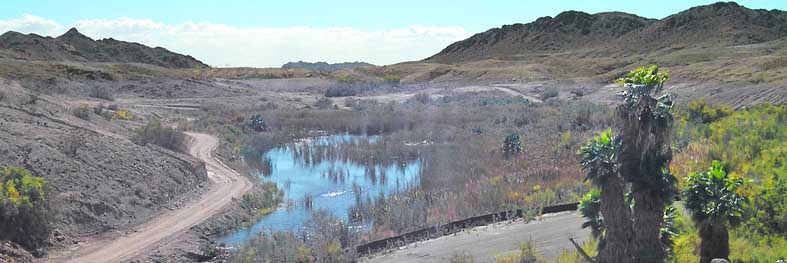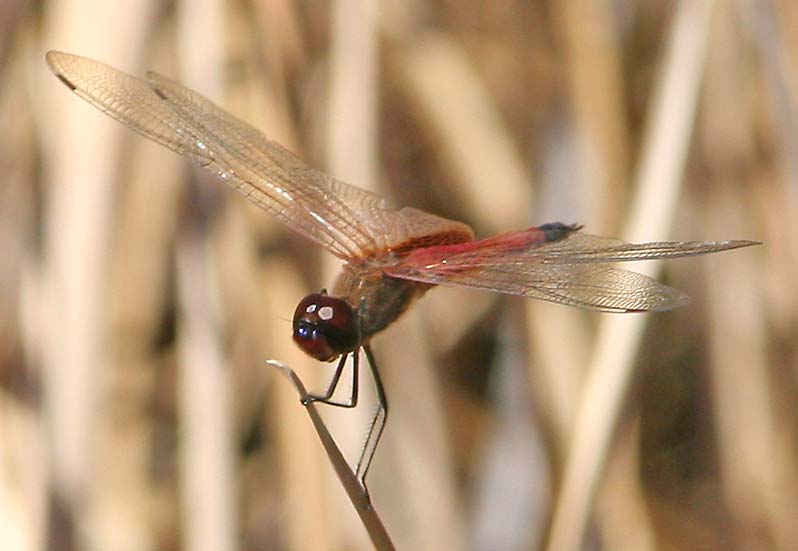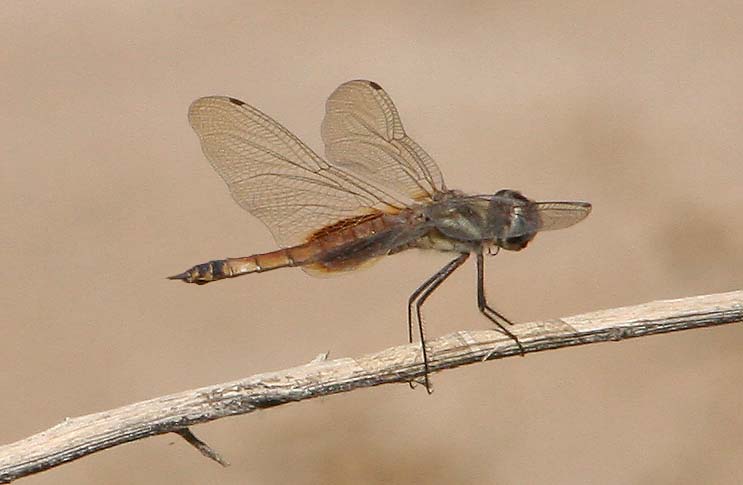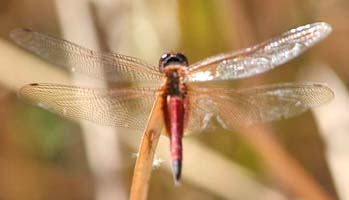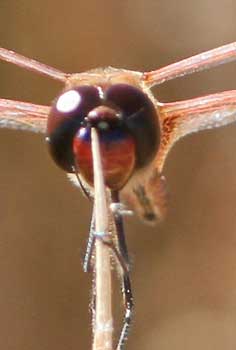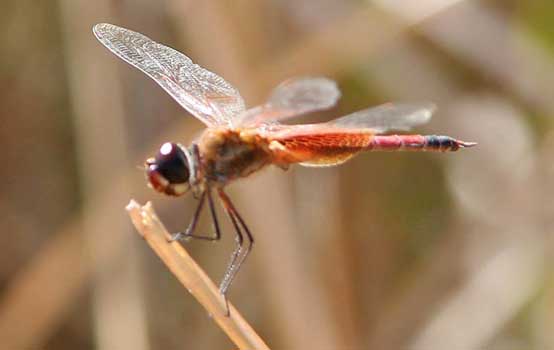| |
STRIPED
SADDLEBAGS
Tramea
calverti
|
|
| During Ode Blitz II in October 2006, this Mexican
species was discovered at West Pond, near Imperial Dam, Imperial Co.,
for a first California record. We thought it would be fun to hit the
same spot a year later in hopes of vagrant dragonflies. On 13 Oct 2007,
Rita Carratello and I, plus Tim Manolis, visited West Pond and
vicinity. |
|
|
|
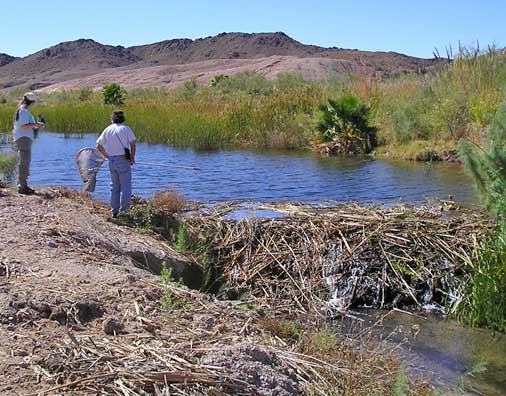 |
We found some nice odes at West Pond but nothing
rare, so near mid-day we drove up Senator Wash Road to its northern
terminus at Squaw Lake, just below Senator Wash Dam. From the dam we
could see a nice pond & wetland just to the east (photo above) but
there was a "No Trespassing" sign. We asked permission at South Mesa
campground and were granted access. The pond proved to be formed by a
beaver dam (left) with a nice creek running from the beaver dam and all
the way down to Squaw Lake itself.
Tim Manolis was just below the beaver dam at 1:18
p.m. when he shouted "Striped Saddlebags!" We came running and I
started taking photos (below) of the adult male.
|
|
|
|
|
|
|
So that was exciting — documenting the State's 4th
record of Striped Saddlebags and the first away from
the confines of West Pond itself (although only about 2 miles away).
Tim Manolis posted to CalOdes that evening from Orange County.
Meanwhile, the next day found Rita and me at the
Salton Sea, mostly birdwatching. We stopped by the headquarters of the
Sonny Bono Salton Sea NWR and found we had the site to ourselves. We
wandered down the dike on the south side of the parking lot, with a
canal to our left and mesquite to our right, until Rita spotted another
Striped Saddlebags!
|
|
|
|
|
|
I only managed this one shot (above) before the
saddlebags took off for the mesquite scrub to the north. At the time we
thought it had been an imm male but now, on photo review, I think it is
was a female. This female on 14 Oct 2007 proved to be not even to the
first T. calverti for the Imperial Valley, as Peter Siminski
had seen yet another female the day before at the Wister Unit of the
Salton Sea refuge!
On both the male and the female, note how the red patch
on the wings is confined narrowly to the base of each wing, and
demarcated from the rest of the otherwise clear wing by a sharp,
straight edge. We noted this in flight, and the restriction of the
color can make it difficult to even see the red patch unless close
views are obained. This is very different from the extensive and
oddly-shaped patch on Red Saddlebags. Further, both of the Striped
Saddlebags had lots of black on the dorsal surfaces of abdominal
segments 8, 9, and 10, and both had white stripes on the thorax. These
stripes, too, could be hard to see except at close range or the right
angle.
|
|
|
